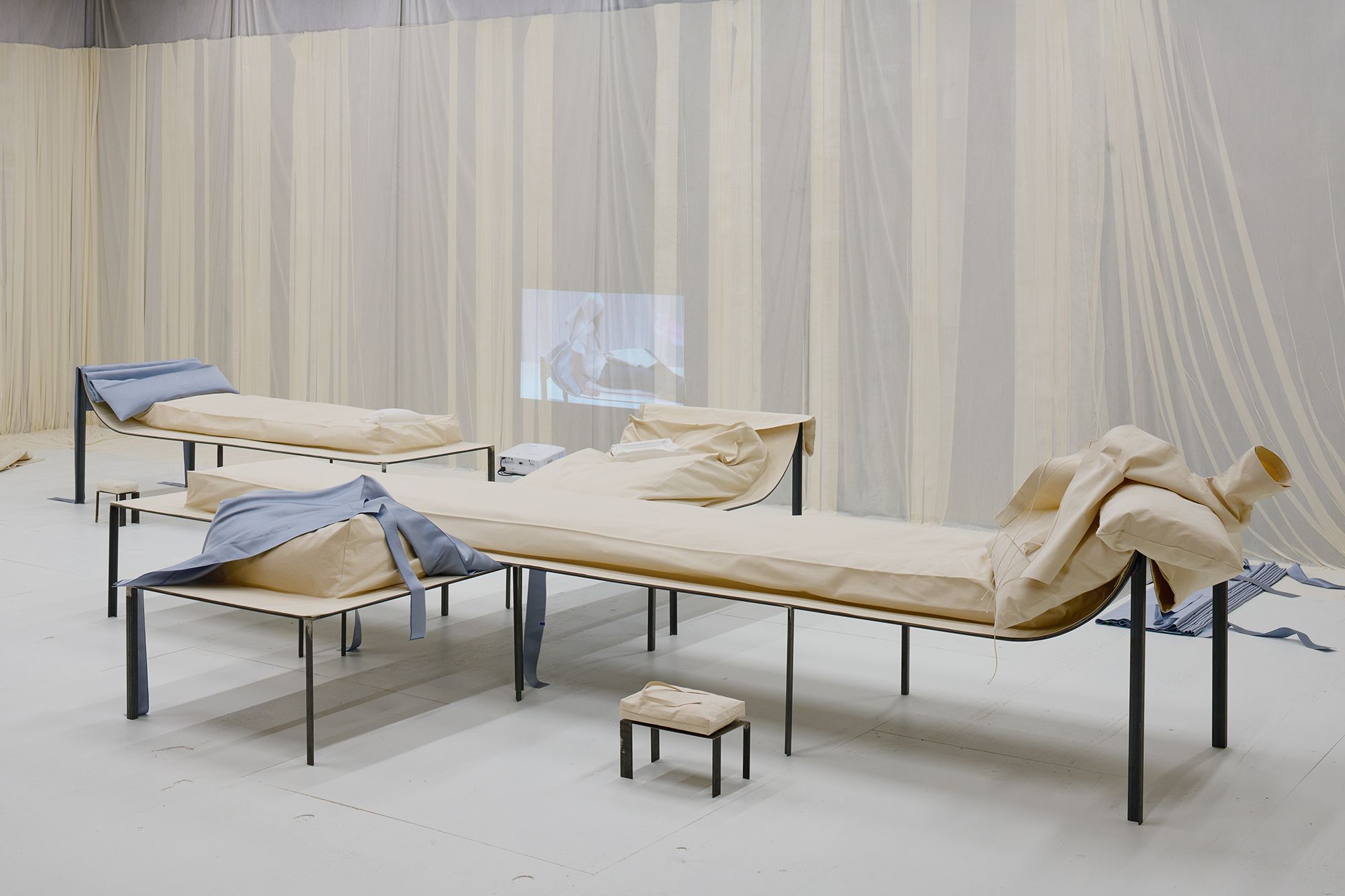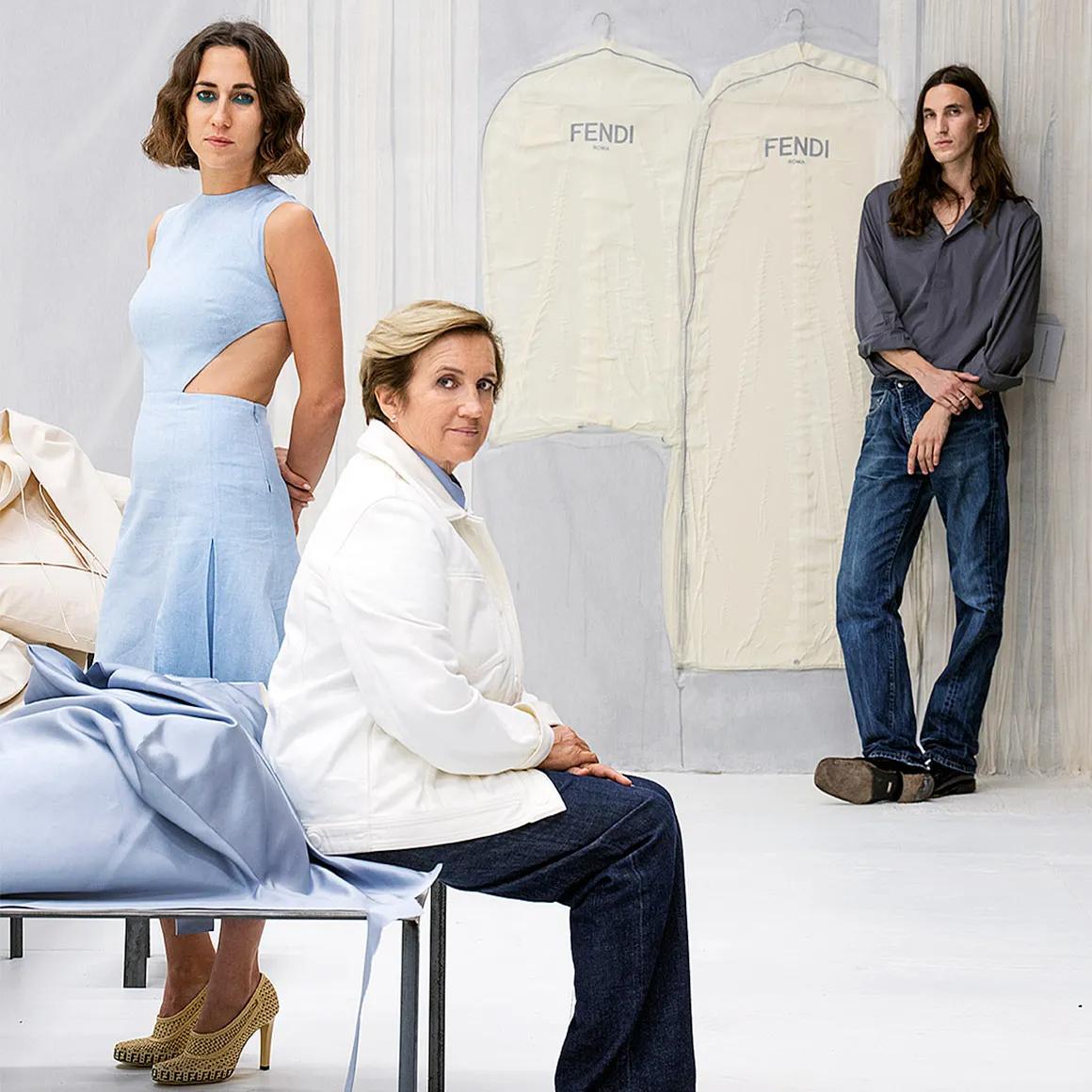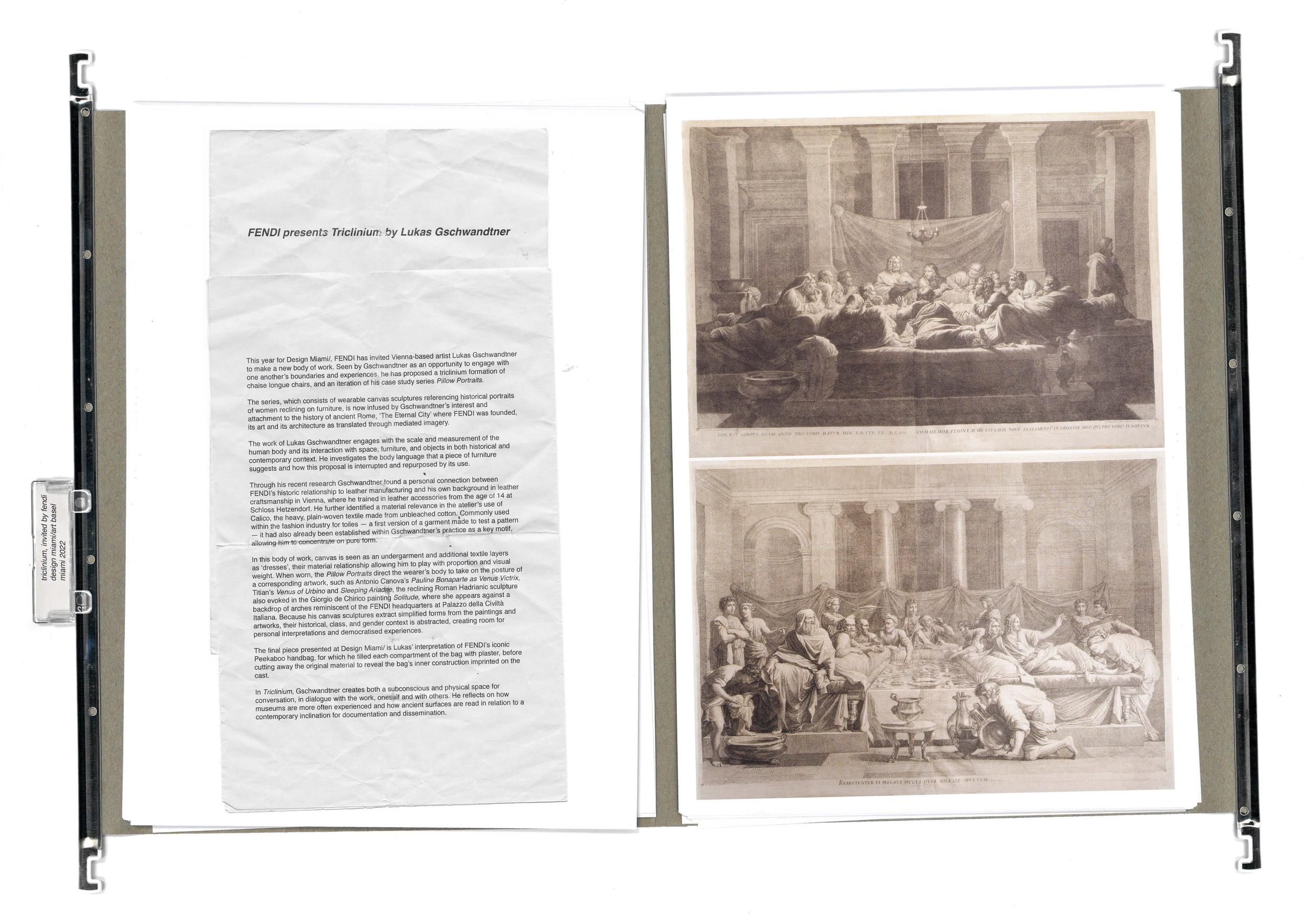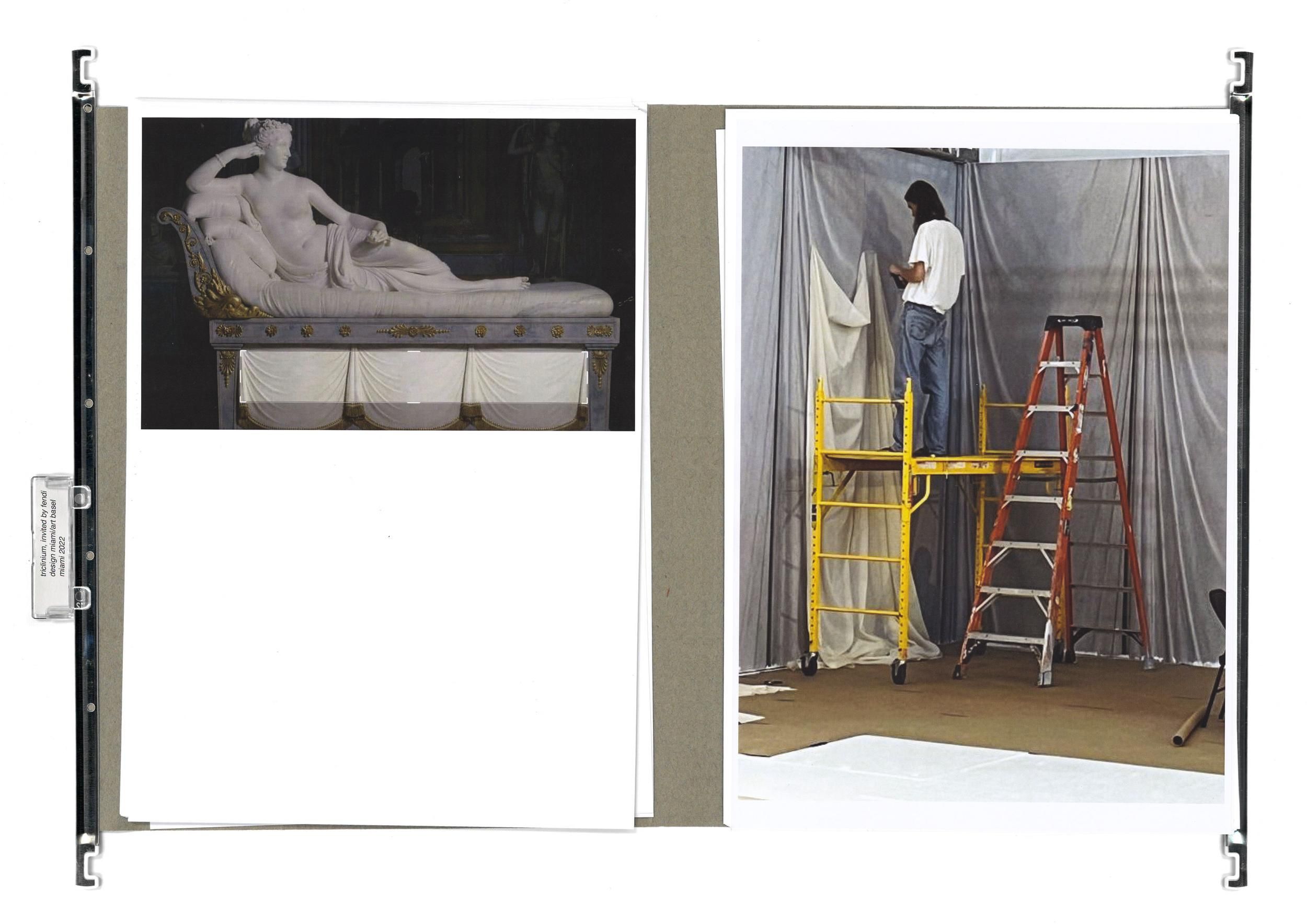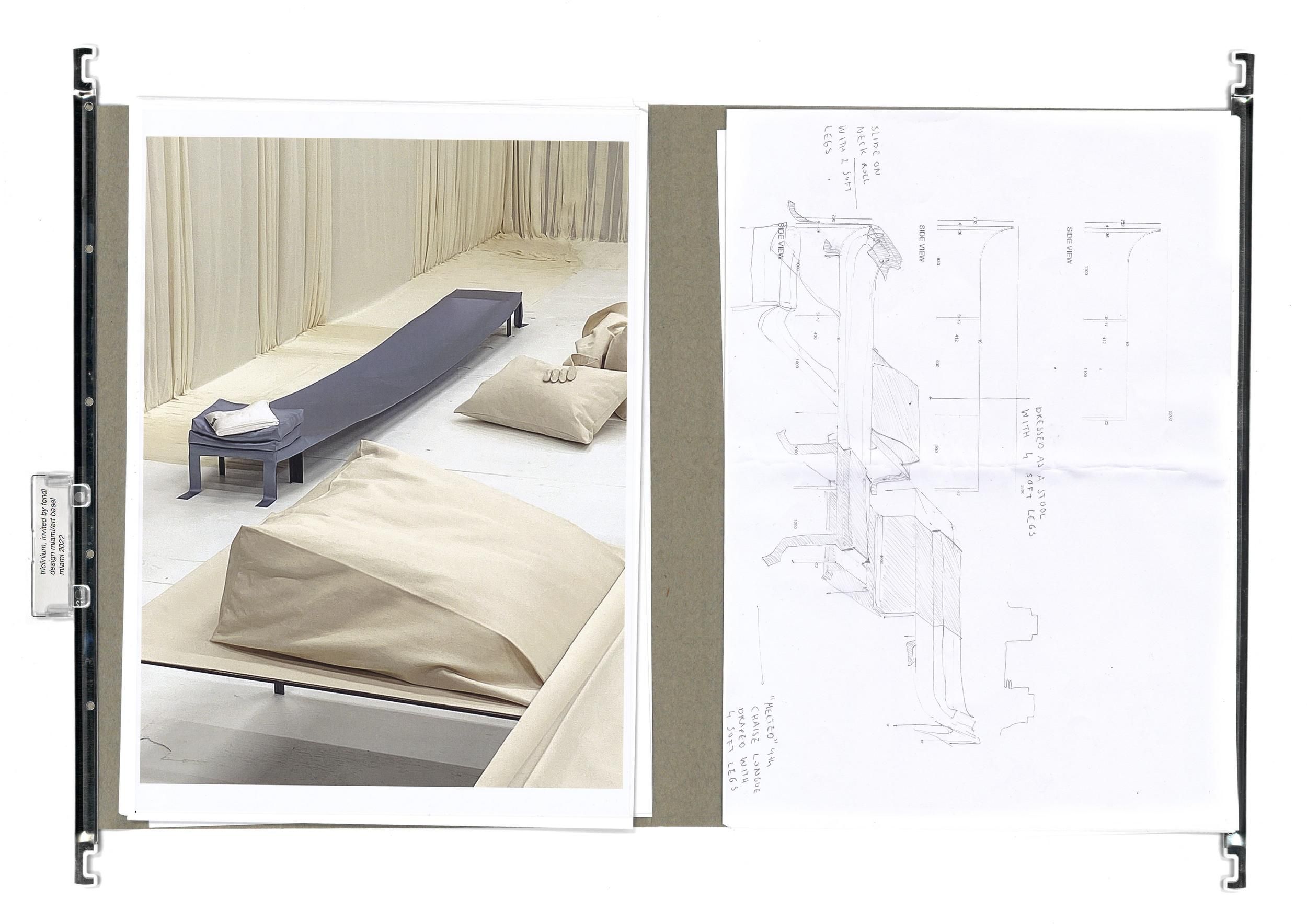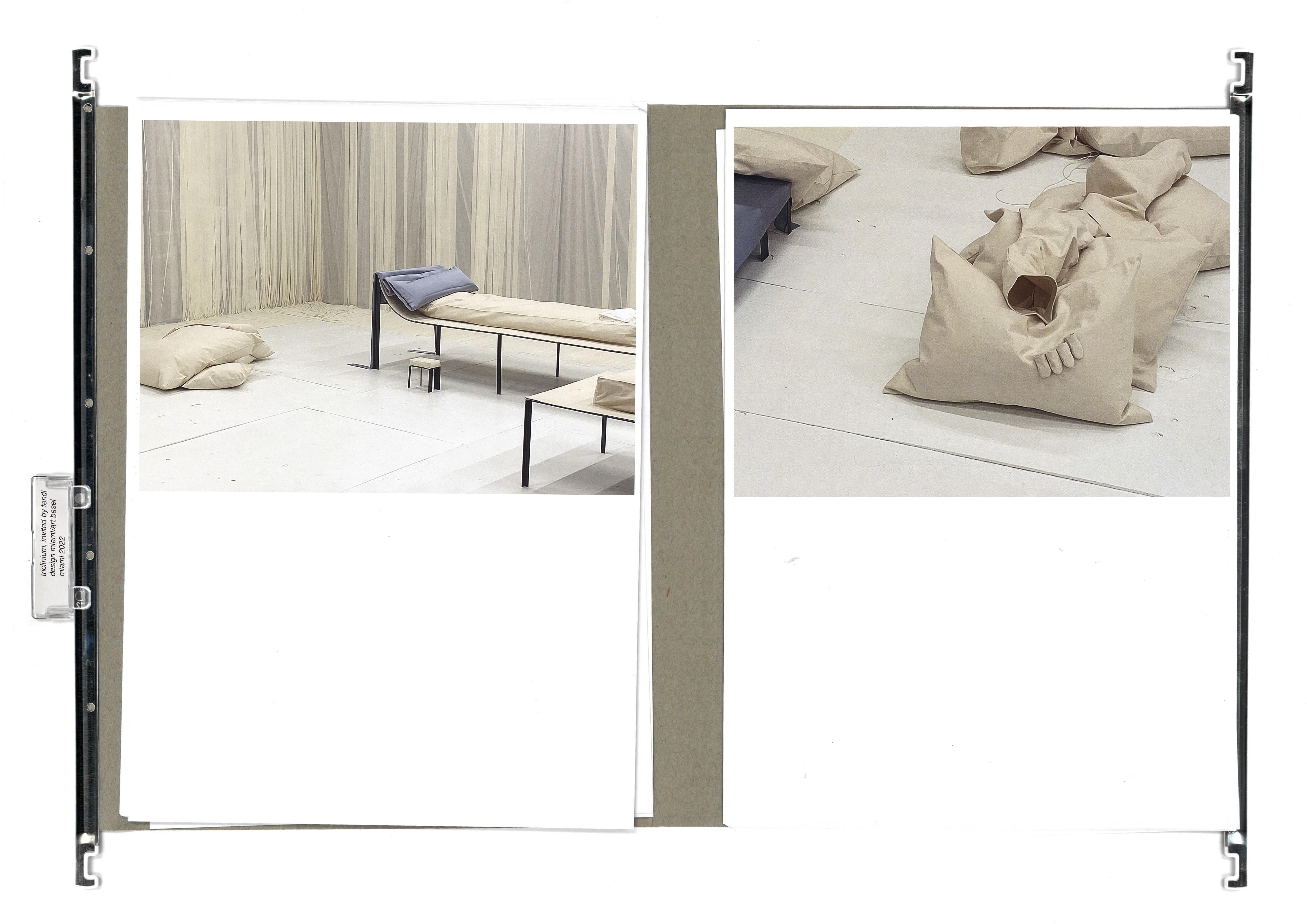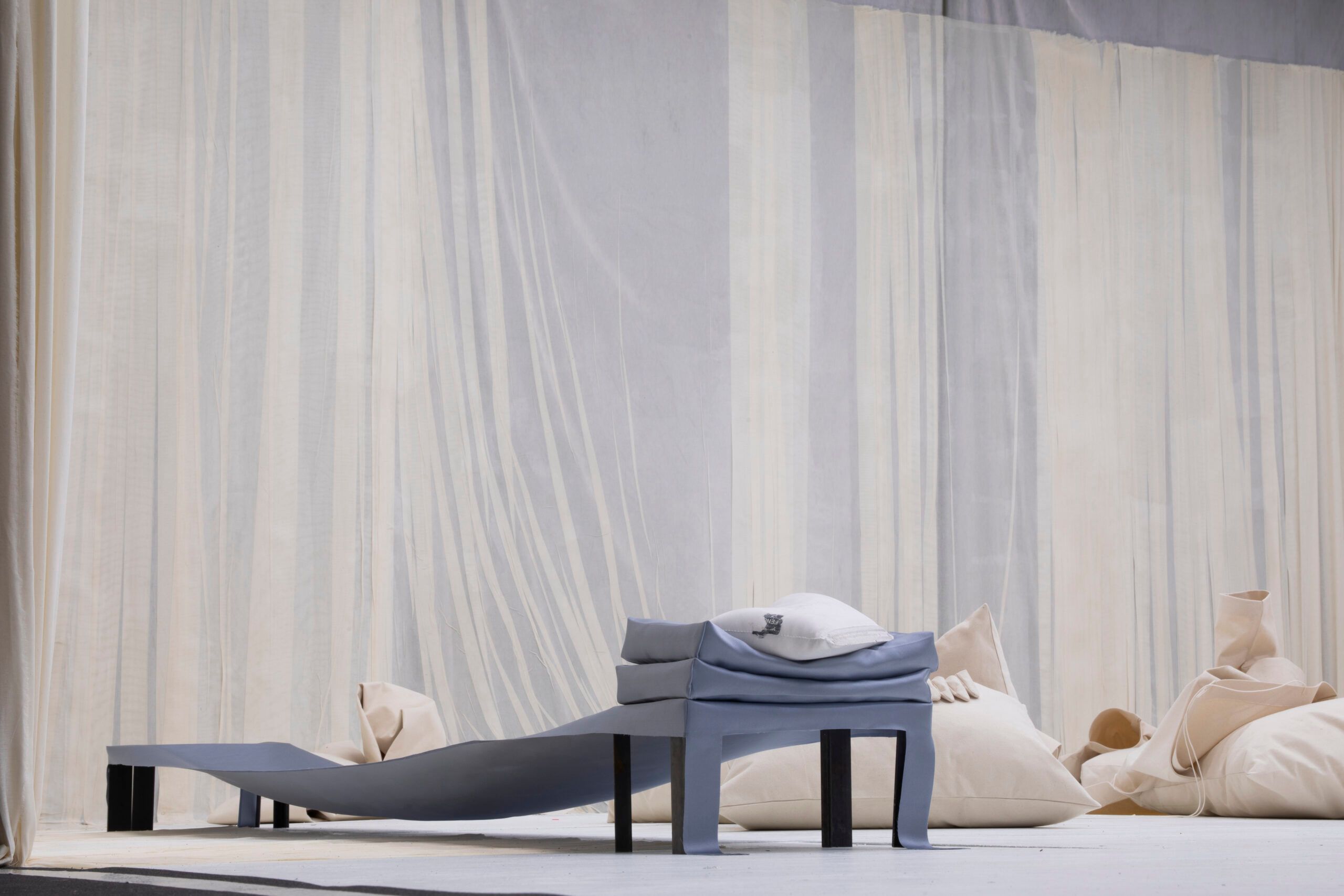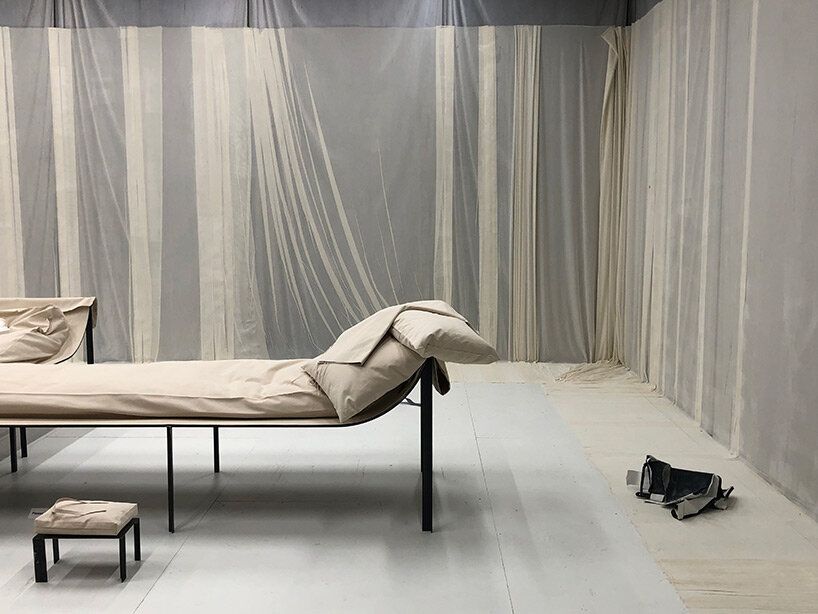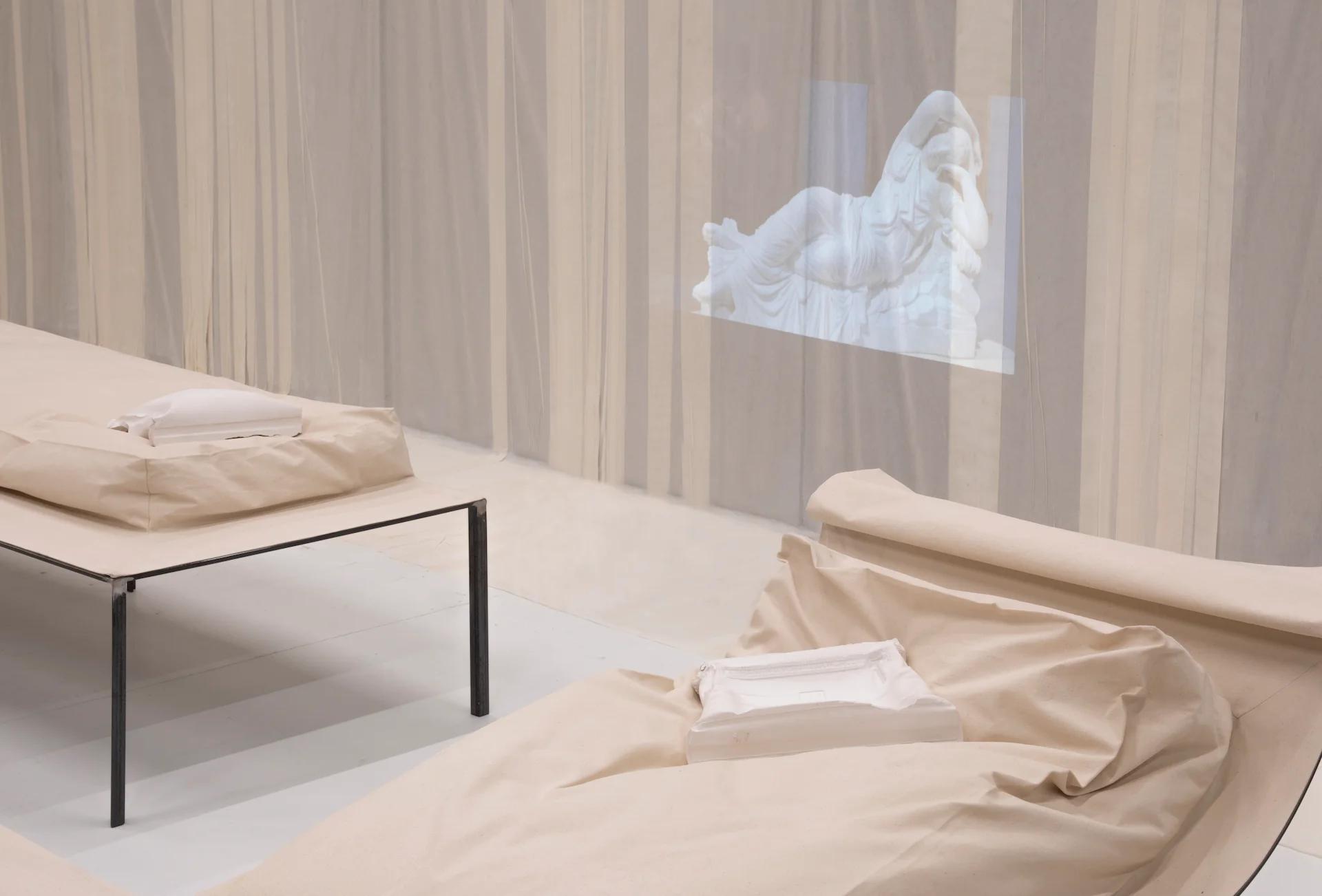featured project
Triclinium/Design Miami/2022
by Lukas Gschwandtner
“Triclinium,” named for the arrangement of three chaise lounges chairs into three sides of a rectangle, is a homage to the brand’s Roman heritage.
“FENDI is so iconic. I love the family tradition. I love the women there. They’re all so powerful. It’s been beautiful to get to know them, and to understand their language. And to give me a platform like this is very generous”
Lukas Gschwandtner
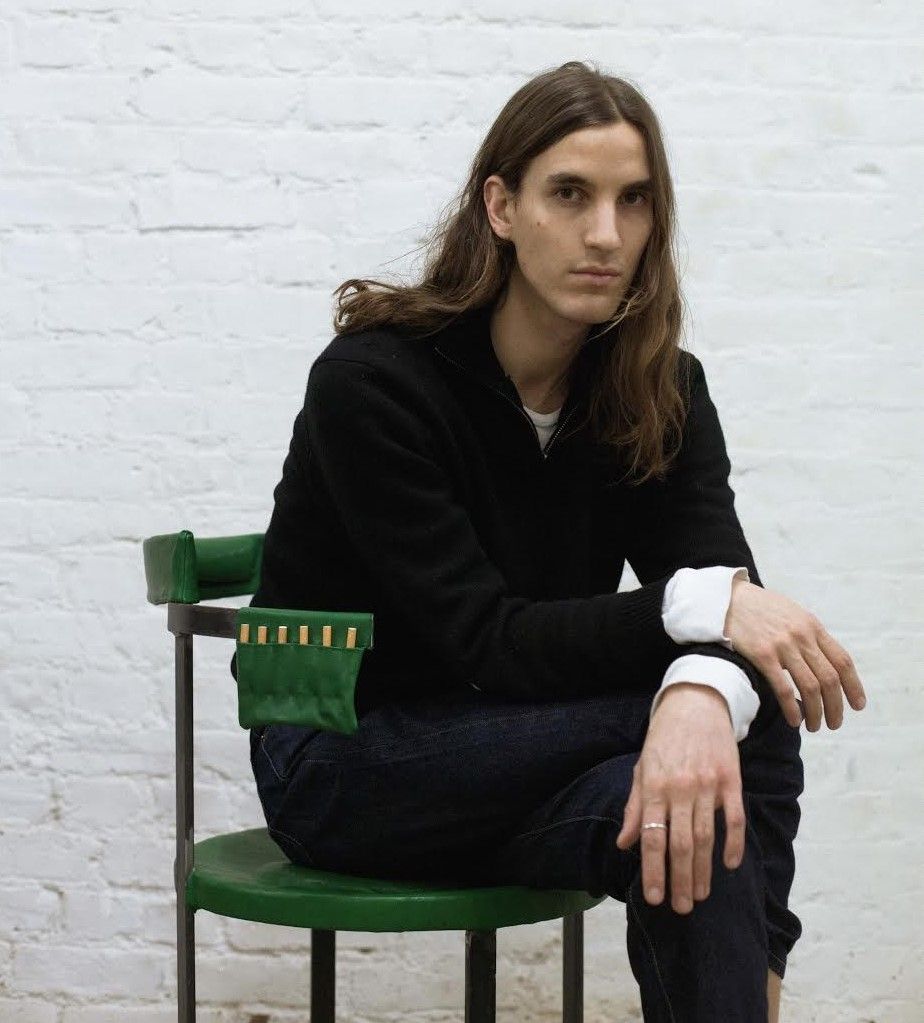
The work of Lukas Gschwandtner engages with the scale and measurement of the human body and its interaction with space, furniture and objects in both historical and contemporary context. He investigates the body language that a piece of furniture suggests and how this proposal is interrupted and repurposed by its use. Lukas Gschwandtner holds a B.A. in Spatial Design from Chelsea College of Arts in London and has prior training in accessory design and traditional leathercraft from Schloss Hetzendorf in Vienna. In 2018, he received a grant from the Arts and Culture Division of the Federal Chancellery of Austria for Wiener Maße, a travelling steel, plaster, and canvas construction, which focuses on the shared word in conversation and the resulting perception of time. The installation was tested at Raven Row and RIBA. Lukas participated in Peana’s 2019 residency exchange program in Monterrey, Mexico, funded by the Rockefeller Brothers Fund. This was followed by a solo show at Lant Street, curated by Jermaine Gallacher. Lukas currently lives and works in Vienna.
Lukas Gschwandtner
Designer

The work of Lukas Gschwandtner engages with the scale and measurement of the human body and its interaction with space, furniture and objects in both historical and contemporary context. He investigates the body language that a piece of furniture suggests and how this proposal is interrupted and repurposed by its use. Lukas Gschwandtner holds a B.A. in Spatial Design from Chelsea College of Arts in London and has prior training in accessory design and traditional leathercraft from Schloss Hetzendorf in Vienna. In 2018, he received a grant from the Arts and Culture Division of the Federal Chancellery of Austria for Wiener Maße, a travelling steel, plaster, and canvas construction, which focuses on the shared word in conversation and the resulting perception of time. The installation was tested at Raven Row and RIBA. Lukas participated in Peana’s 2019 residency exchange program in Monterrey, Mexico, funded by the Rockefeller Brothers Fund. This was followed by a solo show at Lant Street, curated by Jermaine Gallacher. Lukas currently lives and works in Vienna.
Lukas Gschwandtner
Designer

The work of Lukas Gschwandtner engages with the scale and measurement of the human body and its interaction with space, furniture and objects in both historical and contemporary context. He investigates the body language that a piece of furniture suggests and how this proposal is interrupted and repurposed by its use. Lukas Gschwandtner holds a B.A. in Spatial Design from Chelsea College of Arts in London and has prior training in accessory design and traditional leathercraft from Schloss Hetzendorf in Vienna. In 2018, he received a grant from the Arts and Culture Division of the Federal Chancellery of Austria for Wiener Maße, a travelling steel, plaster, and canvas construction, which focuses on the shared word in conversation and the resulting perception of time. The installation was tested at Raven Row and RIBA. Lukas participated in Peana’s 2019 residency exchange program in Monterrey, Mexico, funded by the Rockefeller Brothers Fund. This was followed by a solo show at Lant Street, curated by Jermaine Gallacher. Lukas currently lives and works in Vienna.
“I don’t think there is a very big difference between fashion and design. I find that we both share the same language, especially when it comes to creativity. Both have something to do with functions and response to functions.”
Silvia Venturini Fendi

